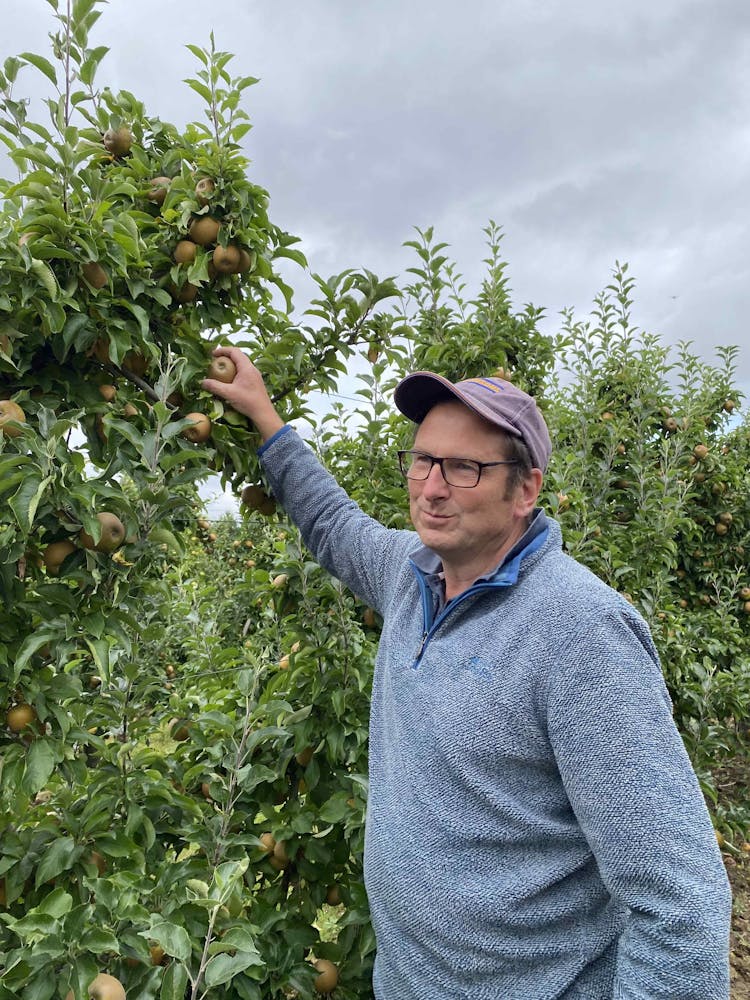Behind the Box: Three Juicy Apple Facts
As part of our Behind the Box series, we took a trip to see John and his team at Hares Fruit Farm in Kent.

We started rescuing from John back in 2016, when Oddbox was just a mere seedling. And now we rescue any apples that are “too big” for other destinations – plus the Lilibets used in Oddbox apple juice. Here are three juicy facts we picked up from our trip.
1. Grafting is a magical art
Ever planted an apple pip in soil and hoped for the best? On commercial farms, young apple shoots – known as scions – are actually grafted onto existing root stock. That’s the lower part of a mature and healthy apple tree.
The two parts don’t have to be from the same apple variety – in fact, this is a good way for growers to ‘switch’ varieties if one isn’t commercially successful. For example, you could graft a Gala scion onto the lower part of a different kind of apple tree, and then the tree would grow Gala apples.
Grafted trees give growers more consistency and predictability. As well as having useful traits, like being disease-resistant or hardy in the cold, they can also be relied on to grow fruit at a predictable time and to a (relatively) consistent quality. Magic.
2. Rows have to be mixed
At Hares Fruit Farm, all the trees are planted in neat rows. But they’re not all the same apple variety – in fact, mixing things up is important for effective pollination.
So if you’re growing Braeburns, for example, Russet or Cox trees in the middle of a row will act as pollinators for the main crop. If you just had rows of the same variety, pollination would be less effective which would mean the pips wouldn’t develop properly and the apples wouldn’t grow.
3. Apples can be stored for months
Depending on the variety, apples can be kept in cold storage after being picked to keep them fresh for longer. The temperature of the store room starts at a similar level to the air outside, then is slowly reduced – if the change happens too quickly, the apples won’t like it and could be damaged.
Once the air is thoroughly cooled, the door is locked and can’t be opened again until the apples are taken out for distribution. So to test the quality of the apples, John and his team have a 45-second window to open a hatch at the top of the store and pick a few out to try. Speedy!
Follow us on socials for more insider apple facts – plus everything we unearthed on our Behind the Box trips to see our blueberry and brassica growers, too. And you can also read more about John’s Lilibet apples, which were used in our first-ever juice here.
Toodle-pip for now, the Oddbox team.

